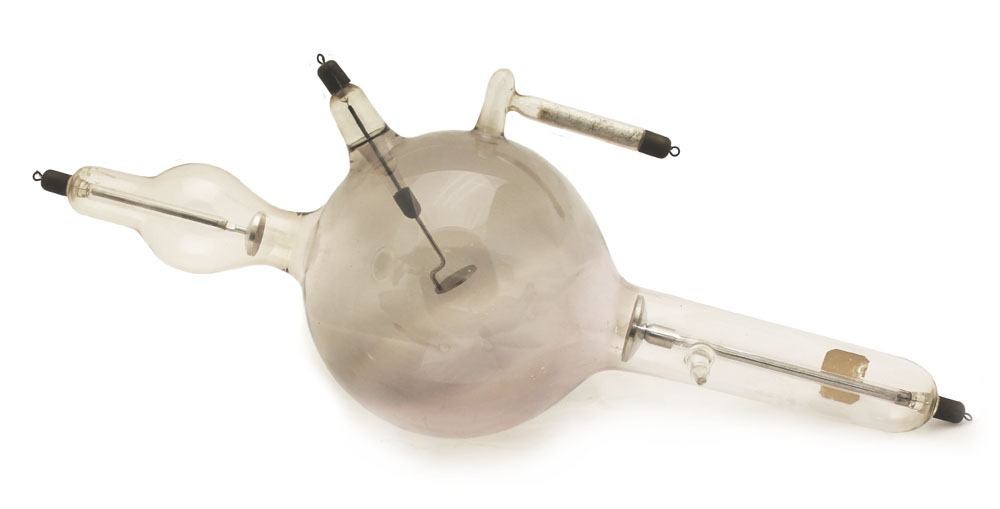Macalaster & Wiggin Cold Cathode X-Ray Tube (ca. 1905-1910)

A fairly conventional bi-anode tube manufactured by Macalaster & Wiggin (M&W) Company of Boston, likely between 1905 and 1910.
The aluminum cathode is located almost at the point where the glass arm that surrounds it is attached to the right side of the spherical bulb (as seen in the photo). The company initials "M&W," "Boston" and the serial number "10279" are etched on this arm.
The anode is the aluminum disk inside in the glass arm connected to the left side of the bulb (as seen in the photo). I don't know the reason for the enlargement in the glass just behind (to the left of) the anode—if you know, please tell me. Both the cathode and anode have been discolored by use.
In the photo, the anticathode enters the tube from the upper left at a 45 degree angle so that the circular platinum target is positioned in the middle of the bulb. The fact that it employs a "light anode" (i.e., low mass target) means that the tube is unsuitable for heavy work loads.
The regulator (aka regeneration device) for controlling the gas pressure inside the tube is the glass appendage attached to the upper right portion of the bulb. Inside the regulator is a white material, probably asbestos, that contains a chemical that would release gas into the tube when the material was heated. One thing is missing: the wire lever that should be attached to the regulator. The position of the free end of this lever would create a spark gap between the regulator and the electrical terminal for the cathode.
M&W purchased the Frey glass blowing operation from Swett & Lewis in 1902. They were known for their tungsten targets. In 1916 they, along with Scheidel-Western and Snook-Roentgen, merged with the Victor Electric Company which then became the Victor X-ray Company.
Size: Approximately 16" long with 6" bulb diameter
Reference
ERN Grigg. Trail of the Invisible Light. Charles C Thomas 1965.
